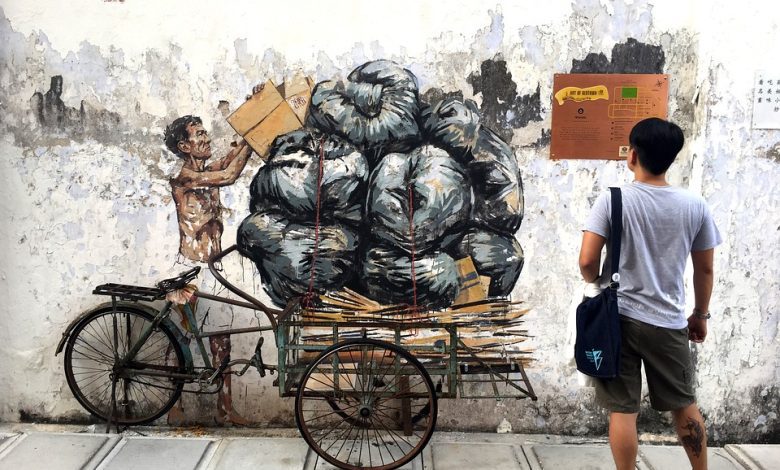

By Joachim Ng
Ipoh Old Town has all the nostalgia to pull in foreign tourists especially from Europe and people from China who live in the new megacities devoid of history and heritage. It is well endowed by a rich cultural past to gain extra revenue from the current worldwide surge in global travelling.
But to reap a bonanza of foreign tourist dollars, some important changes are needed to align Old Town’s business style with the needs of families and backpackers who seek out cultural experiences.
Only the Little India section is geared, especially for visitors from India. The rest of Old Town becomes deathly quiet by 6pm, as the shops begin closing at 5.30pm. This is also true of the over-hyped Concubine Lane which is really a pasar malam that runs in the daytime. What you see are mostly bodywear and fashion accessories that locals want.
European tourists prefer later hours when it is less hot. But just as they leave their hotel rooms for an outdoor stroll, the shops begin closing. It will please them if shop opening hours were adjusted to 10am-8pm, but that’s pointless as most shops cater to local tourists who prefer to be early. At nightfall they cool it in the pizazz shopping malls.
However, the City Council itself can rake in silver dollars by engaging an event management company to take over Concubine Lane from 5.30pm. Task the event manager with pulling in stallholders who specialise in artistic craft products that are reminiscent of the golden oldies.
Deploy street musicians to sing and play Shanghai oldie tunes. Ensure that they wear 1920s-30s clothing, and tourists will throw silver coins into the hat. So, the council needs to pay these performers just a small sum.
To adorn Old Town with night glitz, hang up multi-coloured solar powered lights on the facades of late 19th century-early 20th century buildings that possess striking architectural styles. Some two dozen of these awesome landmarks dot Old Town. Last year, efforts were made to restore the interior of Arlene House aka Kapitan Chung Thye Phin Building into a tourist draw. But just like the heritage trails, these isolated efforts don’t work. There needs to be a big-picture transformation of the Old Town, and there is none.
A centrepiece is the Birch Memorial Clock Tower square which ought to be transformed into a folklore cultural performance spot in the evening and early night. School clubs, cultural associations, and square dance teams will be very keen to take part. The quarterly chiming of the tower bells gives the square a romantic air that is a sure crowd-puller if there is some activity.
Once a large crowd gathers, they will patronise souvenir stalls set up at the square periphery. The lighting and sound systems can be powered by solar batteries. Even the locals will turn up and may form half the crowd.
An interesting feature of Ipoh city that should be developed into a bigger draw is the number of cultural museums. Most tourists will be unaware of their existence as they are privately owned and hence not shown in any city map. A brochure highlighting all the private museums is the least that the City Council should do, as these are stops that heritage-inclined tourists will be keen on.
One museum that holds out the possibility of an interactive learning experience for tourists is the YLCO Museum located in 1 Jalan Lasam, Perak’s foremost Green Building Index certified building.
Founded by St Michael’s Institution alumni Ignatius Chew in 2012, the museum features the genealogical connections linking four prominent Ipoh clans: Yeohs (including Oscar winner Michelle Yeoh), Lims (including Datuk Lim Si Boon who is executive chairman of Kinta Properties), Chews (including Ignatius who is curator of the museum) and Ohs (including Dato Seri Oh Teik Chay who is managing director of Ericsenz Capital).
YLCO Museum in Ipoh’s Greentown suburb is a magnetic draw for locals as well as foreigners who want to create their family roots going as deep as they can. Ignatius, who is also curator of the museum, can show you how to go about creating and designing your own family tree going back two centuries.
Ignatius or his assistant will instruct you how to piece facts together from stories of the past told by your elders, from albums of old pictures, and some knowledge of the history of places. Bring along a large sketch book and pencils to start your discovery of roots. History possesses a most alluring charm, because everyone loves a good story and YLCO Museum has many good stories to tell.
Contrary to perceptions that museums are dusty spots for dinosaurs, YLCO Museum stands out for its occasional gatherings of notables including personalities from afar.
An August birthday celebration for the oldest YLCO member, the 96-year-old Mrs Yeoh Kian Teik, saw teachers from two schools in Ipoh – St Michael’s where her son Prof Ronald Yeoh studied and Ave Maria Convent where she was the first non-nun principal – Royal Artist Lat who was one of her former students, professors from several local and foreign universities, and some Oh families from Britain, Switzerland and USA attending.
For a complete account of this Special Reunion Dinner event, read James Gough’s article titled “A Reunion Night to Remember” published on August 20.
Now let’s delve into the city’s signature hallmark – food. Concubine Lane doesn’t offer any fare that is sufficiently notable for any foreign tourist to visit the location just to taste it. Ipoh should ride on its gastronomic fame to pioneer a health-conscious dietary lifestyle for Malaysia. It has the expertise to do so, and some universities in Ipoh such as QIU offer culinary arts and food science courses at diploma and degree levels.
Ipoh’s cuisine professionals should respond to the growing worldwide concerns over the role of food in climate change and match the efforts of Le Cordon Bleu, the renowned French culinary and cooking school that is offering a diploma programme in the art and science of crafting exquisite plant-based diets.
The City Council should impose a ruling on all Concubine Lane eateries that licence renewal is conditional upon them offering a Planetary Health Diet set menu as an alternative, even if secondary, choice and promote it in buntings and wall posters.
The Planetary Health Diet was recommended in 2019 by a commission of medical and nutritional experts. It is based on an increase in consumption of vegetables, fruits, whole grains, legumes and nuts, and a decrease in consumption of red meat, sugar and refined grains. Ultra-processed food is of course a no.
Can Ipoh restaurateurs match the ability of Le Cordon Bleu chefs and dish up the Planetary Health Diet? If they can’t it will be a stain on the city’s culinary reputation.
Will Euro-American tourists go for it? Yes, they may be far better informed on health matters than Malaysians. A study by Loma Linda University in California last year found that people who regularly consumed red and processed meat had an 18% higher risk of mortality in any given year.
There is a local misperception that vegetarianism is a completely Asian fad with no place in Euro-American culture. But the healthiest people in America are probably a large group known as Seventh Day Adventists. Since the founding of their community, they have believed that plant food is the best.
In addition to avoiding smoking and alcohol, Adventists refrain from consuming meat and ultra-processed foods such as white bread so immensely popular in Malaysia. Statistics indicate that they have lower rates of cancer, a longer life expectancy, and better physical and mental health compared with meat-eating Americans.
So go for it. The Planetary Health Diet can be a great tourist draw. If it’s prudent to start cautiously, Concubine Lane could launch a Meatless Monday campaign removing all meat dishes just for one day a week.
===============
Disclaimer: The views and opinions expressed in this article are those of the author and do not necessarily reflect the official policy or position of Ipoh Echo


